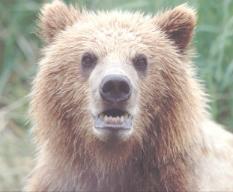
The fiinal Environmental Impact Statement has been released for the I-90 Snoqualmie Pass Project located outside of Seattle in Washington state. One facet of this project is to make this section of the interstate more wildlife friendly.
For the last few years the Washington State Dept. of Transportation has engaged several groups in the planning process to expand a section of Interstate 90 just east of Snoqualmie Pass. Among the groups has been the I-90 Bridges Coalition, a non-profit group that has spent countless hours setting up remote camera stations and doing winter tracking studies. This information has helped the WaDOT determine where wildlife are crossing this major freeway and where wildlife bridges might be placed for the best use. This has been a landmark project in the collaboration of government agencies and private groups to forward a large project to everyone's benefit.
Wildlife bridges have been proposed or installed over highways in the US, Canada, Slovenia, Germany, France and others. They are found to be well used and benificial to the wildlife and to the safety of drivers. Check out these photos.
For animals, the ability to cross I-90 and move north or south to disperse is criticaly important for all species, but especially those with large ranges like the grizzly bear. An Environmental Impact Statement gathers the best science and details the options for how best to move forward with the project. Several public meetings, at which comments will be recieved, are scheduled for September.
Here are more details:
The I-90 project will improve safety for people and wildlife from Hyak to Easton on the major east-west roadway in Washington State.
Structures for wildlife passage would be built at the 14 major wildlife crossing areas within the project. This will increase safety by reducing collissions between wildlife and vehicles, and help in connecting the wildlife habitat that is currently seperated by the highway.
Wildlife passage will be improved by:
Replacing narrow bridges and culverts with longer, wider bridges and culverts to allow wildlife to move under the highway.
Adding wildlife exclusion fences and other features to keep wildlife off the highway and direct them to safe crossing structures.
Adding 2 vegetated wildlife overpasses at strategic locations to allow animals to move over the highway.
The release of this important document is a key step in the timeline for the project, and signals that construction for the first funded phase will begin soon. The first 5 miles of the project are already funded by funds from the Washington State Legislature, and construction is to begin in 2010. There is no funding to date for the remaining 10 miles of the project, but a wide variety of voices are asking our federal congressional representatives to find funding in the upcoming Highway Reauthorization Bill.
Visit I-90 Wildlife Bridges Coalition to learn more about the additional funding needs for this project.
Julie L. Hopkins
